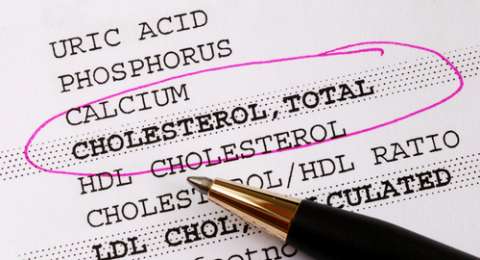Cardiovascular diseases such as coronary heart disease (CHD) and stroke are the main causes of death in both developing and developed countries, they are the causes of 20% death in the world per year. Hypercholesterolemia is defined as a high level of cholesterol in the blood, which is a major risk factor for various cardiovascular diseases. Hypercholesterolemia and related cardiovascular disease are some of the greatest economic, social and medical challenges in the world today. Hypercholesterolemia induces oxidative stress by reducing the enzymatic antioxidant enzyme defense system and accelerating the formation of oxygen free radicals such as superoxide anions. It results in accelerating the peroxidation reaction, which initiates cell damage and atherosclerosis. Previous researches have proven that oxidative stress is involved in various diseases including atherosclerosis and cardiovascular diseases.
Each 1% decrease in total cholesterol level resulted in a 1.5% reduction of cardiovascular mortality risk. The low ratio between High Density Lipoprotein (HDL) / Low Density Lipoprotein (LDL) is an indication of an atherogenic lipid profile and the risk of coronary heart disease. A decrease in LDL cholesterol level by 1 mg / dl reduces the risk of cardiovascular events by 1% and an increase in HDL cholesterol level reduces the risk of cardiovascular events by 2-3%. Secondary metabolic compounds such as phenolic compounds found in herbal plants have attracted interest from researchers recently. Phenolic compounds are an integral part of a plant’s diet. Phenolic compounds such as flavonoids are also reported to suppress lipid biosynthesis pathways, can suppress LDL oxidation and inflammation in artery walls. Flavonoids are potential antioxidants that influence the early development of atherosclerosis by preventing LDL oxidation, inhibiting LDL uptake by macrophages, and preventing the formation of foam cells.
Indonesia is a biodiversed country that is rich in plants with good potential for health. Several literature studies and preliminary tests that have been carried out on the roots of Imperata cylindrica have shown many biological activities, containing phenolic compounds such as flavonoids, oligostilbenoids, anthraquinones which show activity as antioxidants in vitro. The phenolic compounds mentioned previously can be extracted in semi-polar solvents such as ethyl acetate. Imperata cylindrica, which is very abundant in Indonesia, but only considered useless weeds, is thought to be a high-value and beneficial product in the health sector, as an alternative to hypercholesterolemic drugs.
Research by Khaerunnisa et al isolated bioactive compounds in Imperata cylindrica, especially the ethyl acetate fraction using chromatographic methods and structural determination using 1 H- nuclear magnetic resonance (NMR) and 13 C-NMR spectroscopy. While the in vivo test used true experimental with a randomized post-test only control group design. Twenty-eight experimental animals, Rattus norvegicus, Wistar strain divided into 4 groups (each consisting of 7 individuals). The K0 group as the standard group was given standard feed, the K1 group as the control group which was given the hypercholesterol diet, the K2 group as the treatment group which was given a hypercholesterol diet and ethanol extract of Imperata cylindrica 15mg / 200g BW per day, and the K3 group as the treatment group which was given a diet hypercholesterolemia and ethyl acetate fraction of Imperata cylindrica 15mg / 200g BW per day.
The results of research conducted by Khaerunnisa et al (2020) on experimental animals (white rats) showed that giving Imperata cylindrica ethanol extract and ethyl acetate fraction could reduce total and LDL cholesterol levels. Giving Imperata cylindrica ethyl acetate fraction had a better effect in reducing total cholesterol and LDL levels in experimental animals compared to Imperata cylindrica ethanol extract. This is supported by other data, that the ethyl acetate fraction of Imperata cylindrica contains a higher total phenolic content than the ethanol extract of Imperata cylindrica. In the Imperata cylindrica ethyl acetate fraction, flavonoid compounds from the flavonol group which have the name 7,3 ‘, 5’-trimethoksiflavonol were also isolated.
The results of this study can be used as a reference source in recognizing, cultivating and utilizing Imperata cylindrica which are considered as weeds as an alternative to lowering cholesterol level that are proven and explained scientifically. This research can be considered towards the development of standardized herbal medicines for further clinical research.
Author: Dr. Siti Khaerunnisa, M.Si
Details of this research available at:
“Isolation and identification of flavonoid compound and in vivo lipid-lowering properties of Imperata cylindrica ” Biomedical Reports , vol. 13, 38, 2020. https://www.spandidos-publications.com/10.3892/br.2020.1345





